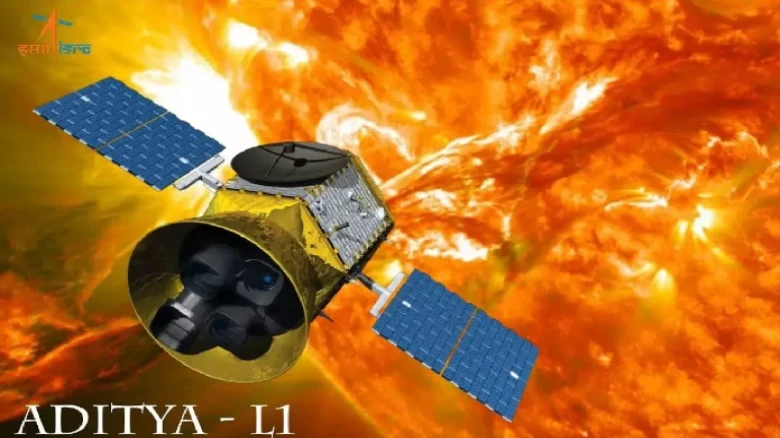National

India's prestigious Aditya-L1 solar mission spacecraft, which was successfully launched on September 2, has now entered a...
Digital Desk: India's prestigious Aditya-L1 solar mission spacecraft, which was successfully launched on September 2, has now entered a significant phase of its mission. The Indian Space Research Organisation (ISRO) announced on Monday that the spacecraft's sensors have begun collecting crucial data that will enable scientists to analyze the behavior of particles surrounding Earth.
The key instrument responsible for this groundbreaking data collection is the Supra Thermal & Energetic Particle Spectrometer (STEPS), a vital component of the Aditya Solar Wind Particle Experiment (ASPEX) payload. These measurements are being conducted at distances greater than 50,000 km from Earth, a region well beyond the Earth's radiation belt.
"This data helps scientists analyze the behavior of particles surrounding Earth," ISRO stated in a post on the social media platform X, emphasizing the importance of this mission in advancing our understanding of space phenomena.
STEPS, developed by the Physical Research Laboratory with support from the Space Application Centre in Ahmedabad, is equipped with six sensors, each oriented in different directions. It is capable of measuring supra-thermal and energetic ions ranging from 20 keV/nucleon to 5 MeV/nucleon, as well as electrons exceeding 1 MeV. These measurements are facilitated using both low and high-energy particle spectrometers.
The data collected by STEPS during Earth's orbits will provide critical insights into the origin, acceleration, and anisotropy of solar wind and space weather phenomena. It will be particularly valuable in understanding these phenomena in the presence of Earth's magnetic field.
ISRO highlighted that the STEPS measurements will continue throughout the cruise phase of the Aditya-L1 mission as it progresses toward the Sun-Earth L1 point. Once in its intended orbit around Lagrangian Point 1 (L1), approximately 1.5 million km from Earth in the direction of the Sun, the data collection will persist.
Aditya-L1 carries a total of seven distinct payloads aimed at studying the Sun, including four dedicated to observing solar light and three to measuring in situ parameters of plasma and magnetic fields. This comprehensive approach will contribute significantly to advancing our knowledge of solar activity and its impact on space weather.
With the successful activation of STEPS and the commencement of data collection, the Aditya-L1 mission is on track to achieve its scientific objectives and provide valuable insights into the intricate workings of our solar system. As the spacecraft continues its journey toward Lagrangian Point 1, the anticipation among scientists and space enthusiasts for groundbreaking discoveries is palpable.
Leave A Comment